When I was about six or seven I remember adding leaves to our houseplant pots to rot down and feed the plants, hoping I could create an everlasting houseplant like all the plants out in the woods behind our garden. Obviously this plan was flawed but the principle, of gardening in a way that is permanent, working as nature does to be self-sustaining, has always stuck with me.
I admire colourful bedding displays a great deal and do enjoy planting them myself but only on a small scale. For me gardening is more about the bigger picture of creating ecosystems that we humans can observe and steer but ultimately leave alone to get on with it. I’m less interested in sowing annuals for a short lived display unless I know they will self seed and become part of the ecosystem.
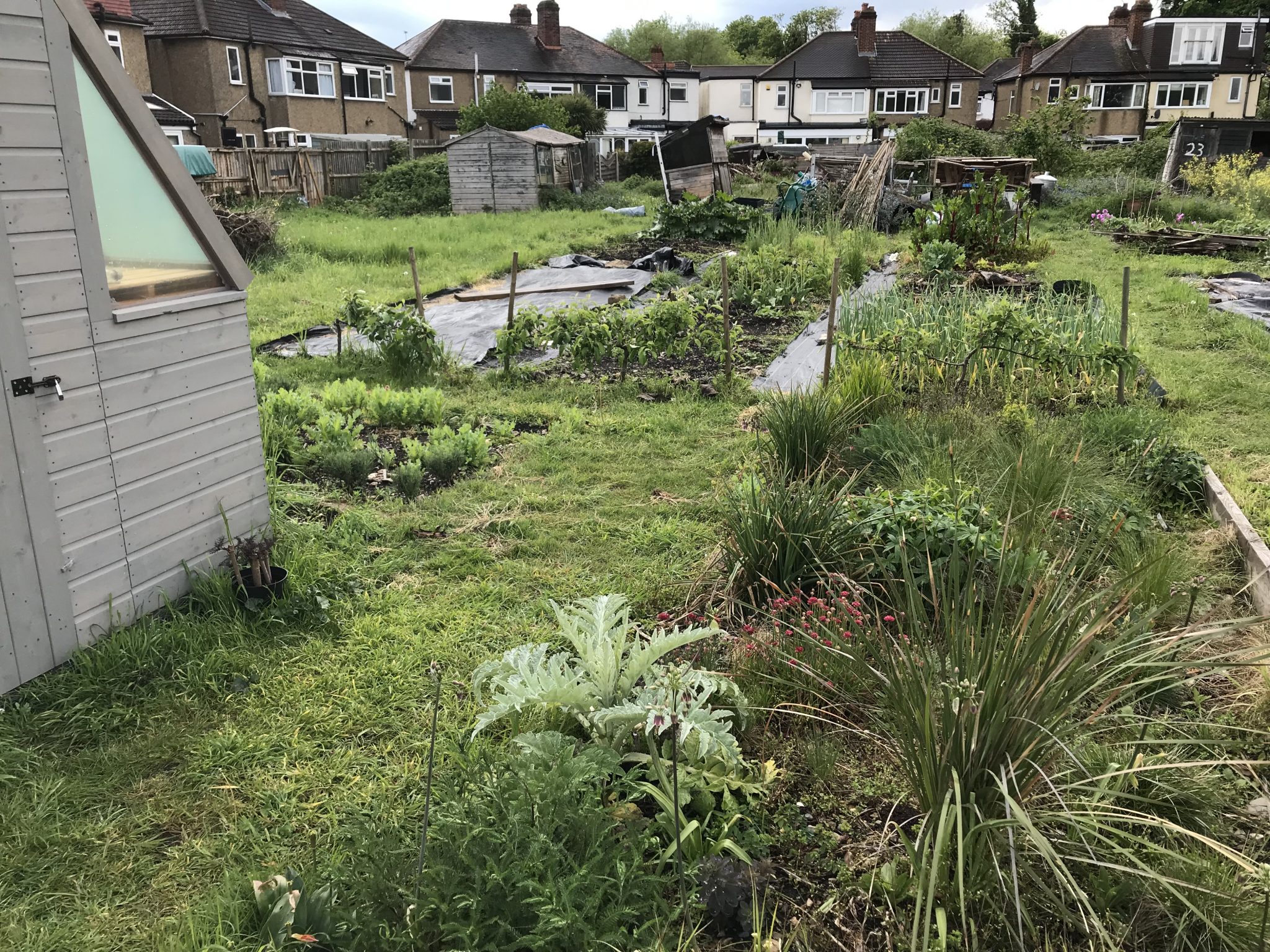
On my allotment I have lots of permanent plantings which I often say are to help with time management around a busy job, which is true, but really it all links back to this innate want to create something natural. Fruit trees and bushes, artichokes, asparagus, horseradish, Jerusalem artichokes. They all grow, doing their thing happily with minimal input from me from year to year.
I’m approaching the herb bed in front of my shed with the same intent of establishing permanence. The mini prairie next to the shed was planted in the first year and has held its own largely for the last four years. Perennials have grown and spread around as I hoped they would. Some haven’t worked, like the Fritillaria persica, withering away, while others like the Armeria have adapted and multiplied. As have the short lived grasses, moving around the bed in little batches as though they’re following an unseen current, circling the stationary Kniphofia.
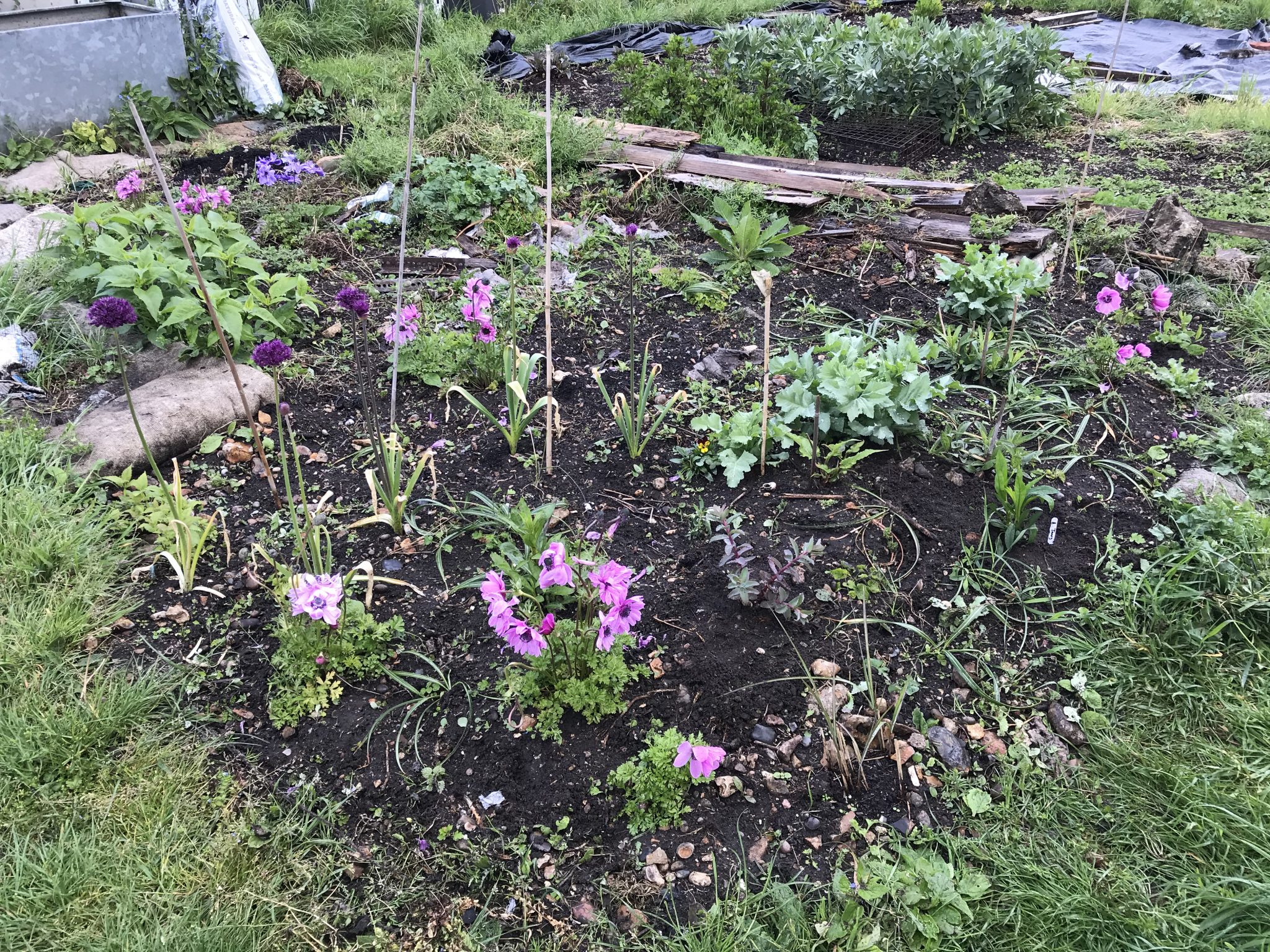
New to the allotment is a large scale perennial meadow, still an early day experiment. I say experiment, I know it will work because I know these plants so well; they’re mainly spare plants from our patio at home. What I don’t know is how it will all look in its first summer. Which doesn’t matter for me, as I’m excited to see it grow and to then make decisions on plant moves next year. It’s this kind of slow evolution of a planting that I really enjoy. Seeing small seedlings, cuttings and divisions turn from little weak things that need our human protection from weeds and slugs, to thuggish plants that are happy and fend for themselves.
All of the plants in this new bed are thugs. They will grow and expand and outcompete everything. Even the bindweed and nettles this area is full of. I only need to keep the weeds in check for a couple more months and then these other plants will do the job for me.
To the outside eye I’m sure it still looks like a weedy patch of ground with bits of allotment junk over but to me I can already see the colour mixes working. The last plants to add are the grasses to fill the gaps; ornamental clump formers that will stand guard and block out the creeping couch. Pennisetum, Deschampsia, various Miscanthus, gradually I’m placing them as the weather warms up. I have many more Deschampsia at home waiting.
Eventually all of these plants will form an interlocking mesh smothering the ground, blocking everything and working with one another in a new ecosystem. At which point my job will significantly be reduced and I can instead enjoy it for hopefully many years to come. As there is no design plan, I’ll have fun looking at what’s grown and how and then imagining a proper plan for the following year, dividing, moving and planting into a final scheme – until the plants decide to move around themselves.
Everything I plant follows this principle of understanding nature to such a degree, we can create a planting that looks after itself and the wildlife around. Above and below ground.
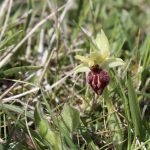
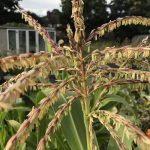
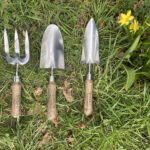
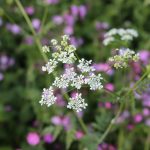
Nice job.
I notice that your allotment is clean. Further back, some one, with their piles of wood and rubble, are less than, well, clean. How do you all deal with this? As for the homes in the area, upstairs windows looking about and out to their backyard scene, how too do they deal with some of the rubble?
Just curious. I ask because the only answer I can find here, in dealing with those around me that aren’t as neat as I would prefer, is to merely be tolerant. Teaching me tolerance? How to forebear? Any thoughts?
Thanks.
Hi Chuck that mess is in fact my mess! Haha well, kinda. It’s stuff leftover from the previous tenant I haven’t been able to remove. So I’m just leaving it in a pile and gradually hiding it behind plants. Although what you might be seeing is a pile of tree stakes which I use for my brassica netting, tomatoes and dahlias. I’ve placed them there for easy access as I’ll be putting them out soon.
That said, yes my allotment is fairly neat. I’m not bothered about other people’s plots personally as they can do what they want – it’s that freedom that I love about allotments. And overall people’s plots are in particularly good order, especially now we’ve had a load of new people take on plots.